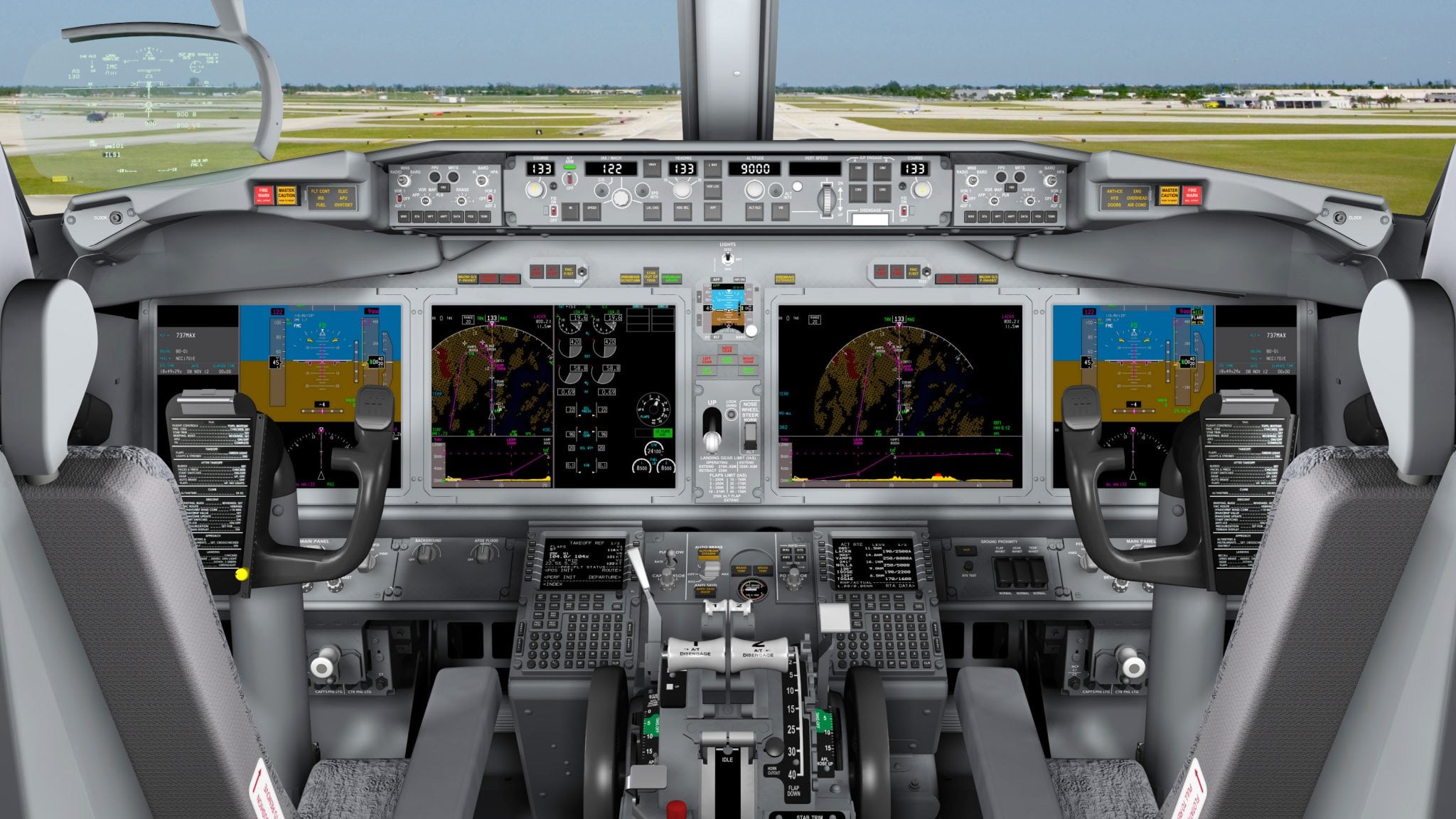
Boeing 737 MAX cockpit.
The Aircraft Communications Addressing and Reporting System (ACARS) will not disappear in 2025 — or 2030 for that matter.
Today, ACARS is well known by flight operations engineers as the character-based messaging service that uses ARINC 618-based air-to-ground protocols to transfer data between onboard avionics systems and ground-based ACARS networks operated by one of two datalink service providers (DSPs), SITA or Rockwell Collins. In the future, ACARS will evolve and eventually transition into the Internet Protocol Suite (IPS).
IPS is a new network infrastructure under development by the SAE International ARINC Industry Activities IPS Subcommittee. It is based on Internet Protocol (IP), using commercial-off-the-shelf (COTS) products to support air-to-ground aeronautical safety services communications. Whereas ACARS is aviation specific, IPS will use multiple line-of-sight and beyond-line-of-sight (BLOS) subnetworks that operate in protected spectrum allocated by the International Telecommunications Union (ITU) and ICAO for safety services, including Inmarsat SwiftBroadband, Iridium Certus, AeroMACS, future satcom and L-band Digital Aeronautical Communication System (LDACS) systems.
This is effectively the multi-link ACARS concept described by SITA, the industry’s other ACARS service provider.
What is important to note is that IPS will have backward compatibility with ACARS. In fact, Rockwell Collins sees it more as a continued evolution of ACARS, which already integrates IP into its data message transfer service.
“There are standards changes going on right now, that will define that future end state that people can take advantage of. There’s standards changes to ARINC 758 which is the CMU, that are being defined, for example,” said Rob Mead, lead engineer for connectivity, digital aviation and analytics at Boeing Global Services.
ARINC 758 is the standard that defines the electrical interface definition and function of an aircraft communications management unit (CMU), which hosts applications related to aircraft data link communications. According to Mead, the IPS subcommittee is also working on changes to ARINC 618, which is the Air/Ground Character Oriented Protocol Specification managed by the Airlines Electronic Engineering Committee (AEEC).
The changes being made to these standards and specifications today will enable an eventual transition to IPS. But don’t expect ACARS as it is known today to disappear any time soon.
As pointed out during a panel discussion with engineers from Allegiant Airlines, Boeing and Rockwell Collins during the Global Connected Aircraft Summit last week, Andrew Onken, global data link product manager for Rockwell Collins, said airlines today are still buying aircraft they will operate over the next two decades. Therefore, even when air navigation service providers (ANSPs) are eventually ready to transition to IPS in the 2030s, there will still be aircraft operating with CMUs and flight management systems (FMS) based on the legacy ACARS or ACARS over IP protocol.
“When we get to IPS, we’ll still be able to take an ACARS message, send it over this new IPS infrastructure and process it as a ground-to-ground message,” said Onken. “We see all that coming together in a connected ecosystem. We’ll have ACARS, we’ll have IP connectivity and all be part of one connected infrastructure.”
According to Rockwell Collins’ description of ACARS, the communications infrastructure is used by airlines to communicate with air traffic controllers and engineers within their own operations centers. The company estimates that about 80% of ACARS messages are used for airline operations centers, while the remaining 20% are for ATC.
One of the airlines using ACARS today is Allegiant Air, which was represented by its flight performance engineer Sai Ravuru on the panel. He said Allegiant is prepared to embrace IPS once it becomes a reality in the future.
“From an applications standpoint, we’re getting ready from what I like to call the variety volume and velocity of data that is going to be justified for various projects on fuel efficiency, performance engineering, [minimum equipment list] MEL tracking,” said Ravuru. “From an ACARS over IP standpoint or purely IP standpoint, we’re both ready and going to be headed in that direction. That’s going to be the biggest shift for airlines.”